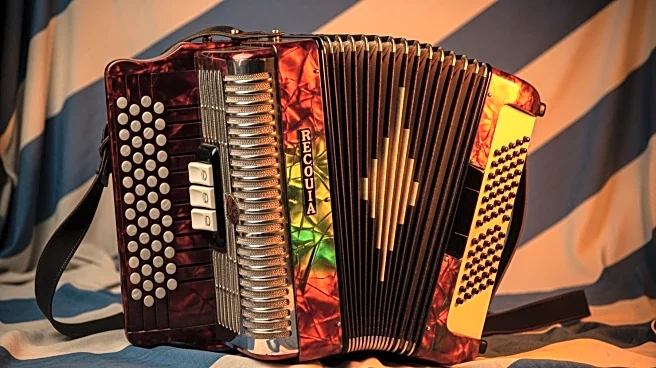What's Happening?
Argentina's cumbia music scene is a vibrant reflection of the country's diverse cultural and migratory history. The genre, often associated with working-class and marginalized communities, has evolved
through influences from various Latin American countries. During Argentina's military dictatorship, many people migrated to Buenos Aires, leading to the development of 'bailantas,' dance halls that became cultural hubs for cumbia music. The genre has been reappropriated by communities, shedding its pejorative connotations and embracing its role as a unifying cultural force. Iconic figures like Gilda have become symbols of freedom and resilience, with her music continuing to inspire across the continent.
Why It's Important?
Cumbia's evolution in Argentina highlights the country's complex social dynamics and the role of music in cultural identity. As a genre that transcends social barriers, cumbia serves as a platform for expressing diverse voices and experiences. It underscores the importance of cultural inclusivity and the power of music to foster community cohesion. The genre's growth reflects broader societal changes, including shifts in demographics and attitudes towards marginalized groups. Understanding cumbia's impact can provide insights into Argentina's cultural landscape and the ways in which music can drive social change.
Beyond the Headlines
Cumbia's journey in Argentina offers a lens into the broader implications of migration and cultural exchange. The genre's acceptance and adaptation by various communities illustrate the potential for music to challenge stereotypes and promote social integration. As Argentina continues to navigate its cultural identity, cumbia remains a testament to the enduring influence of migration and the transformative power of art. The genre's ability to resonate across different social strata highlights the universal appeal of music as a tool for storytelling and connection.












